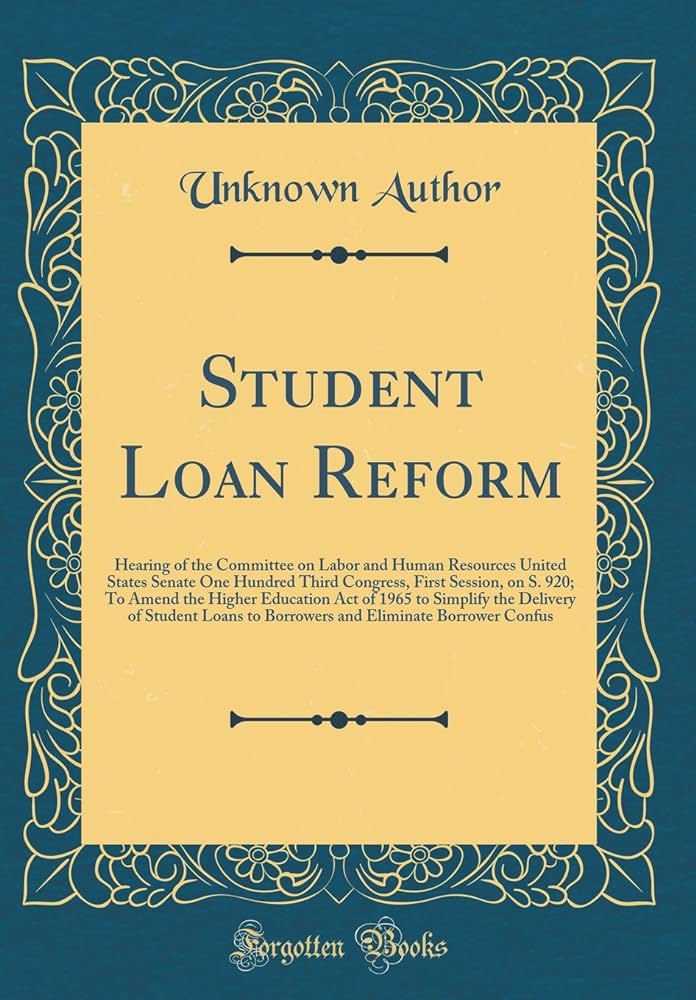Introduction:
Student loans have long been a necessary evil for many pursuing higher education in the United States. While they provide access to education, they often saddle graduates with significant debt that can take years, if not decades, to repay. The burden of student loans has ignited a nationwide conversation, prompting calls for reform and a more equitable system.
In this comprehensive blog post, we will explore the intricacies of the student loan system, the challenges it poses to borrowers, and the various reform proposals that have gained traction in recent years. From income-driven repayment plans to the possibility of loan forgiveness, we will examine the potential solutions that could reshape the landscape of higher education financing.
The Student Loan Landscape:
Before we delve into reform proposals, it’s essential to understand the current state of student loans in the United States. Student loans, often categorized as either federal or private, provide a lifeline for millions of students seeking a college education. However, they come with their own set of challenges. Federal loans, in particular, are subject to complex interest rates, and repayment can be an overwhelming endeavor for many graduates. The burden of student loans can affect various aspects of borrowers’ lives, from career choices to homeownership.
Challenges Faced by Borrowers:
The challenges faced by student loan borrowers are numerous and multifaceted. Some of the most pressing issues include:
Debt Accumulation: The rising cost of education, combined with interest rates, can lead to substantial debt burdens. This debt can take years to pay off, affecting borrowers’ financial stability and overall well-being.
Repayment Struggles: Repaying student loans can be challenging, particularly for recent graduates who are just starting their careers. Monthly payments can feel overwhelming, and missed payments can have serious consequences.
Limited Career Choices: The need to make substantial loan payments can affect career choices. Graduates may feel compelled to pursue higher-paying jobs rather than jobs aligned with their passions and expertise.
Impact on Homeownership: Student loan debt can hinder the ability to save for a down payment and qualify for a mortgage, delaying homeownership for many young adults.
The Call for Reform:
In light of the challenges posed by the current student loan system, there is a growing consensus that reform is needed. Several reform proposals have gained traction and warrant serious consideration:
Income-Driven Repayment Plans: These plans tie loan payments to a borrower’s income, ensuring that monthly payments are manageable. While these plans exist, they could be expanded and improved to better serve borrowers.
Loan Forgiveness Programs: There is a call for more extensive loan forgiveness, potentially for borrowers who work in public service or for those who have made consistent payments for a specified number of years.
Interest Rate Reduction: Advocates argue for lower interest rates on student loans, making them more affordable and reducing the overall cost of education.
Increased Transparency: Many borrowers are overwhelmed by the complexity of the student loan system. Improved transparency and education about loan terms and repayment options could empower borrowers to make more informed decisions.
The Politics of Reform:
The path to student loan reform is not without political hurdles. Proposals to overhaul the student loan system often face resistance, with debates centered on issues of cost, responsibility, and fairness. It is essential for policymakers to find common ground and work towards solutions that benefit both borrowers and the financial health of the nation.
Conclusion:
Student loan reform is a pressing issue that impacts millions of Americans. The challenges faced by borrowers are undeniable, and the current system is in need of improvement. As we move forward, it is crucial for policymakers, educators, and stakeholders to come together and find innovative solutions that make higher education more accessible and affordable for all. Whether through income-driven repayment plans, loan forgiveness programs, or other means, reforming the student loan system can pave the way for a brighter future for generations to come.






